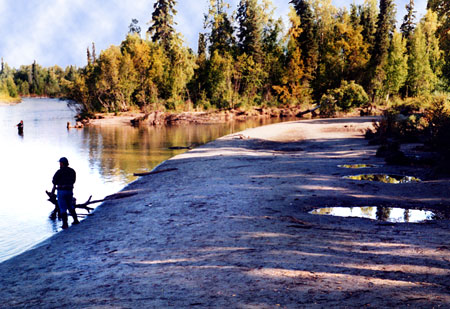Streambank Revegetation and Protection: A Guide for Alaska
Lessons Learned
- Watering plants at least 2 times a week (deep soak watering) significantly increases survival of installed plants, especially in dryer soils and/or in dry years.
- Watering plants immediately after installation and before installing the next layer helps to compress the soils in each installed layer and removes air pockets around plants, ensuring better plant to soil contact.
- Plant willow with 1/4 of the stem length above the ground and 3/4 the stem length below the ground for live staking and brush layering.
- Trim shoots of harvested transplants to compensate for root loss and to promote root growth. As an example, vegetative mat should be trimmed by 1/3 of the shoot length to compensate for root loss and to promote root growth.
- Store plants in snow banks or by refrigeration through their dormancy period to increase survival when planted.
- Cuttings should be soaked in water, out of direct sunlight, from one to four days prior to planting.
- Allowing plants to stay in direct sunlight or to dry out dramatically reduces plant survivability.
- All dormant cuttings should be used within four days of removal from refrigeration and as soon as possible in the spring that they are harvested (from after ground thaw to no later than July 1).
- Fall plantings should occur as the plants are returning to the dormant state and before the ground is frozen.
- Acclimate potted plants for spring plantings by hardening plants near the planting site. These plants should be kept moist during this "hardening", then watered to capacity prior to planting. Do not allow greenhouse plants to be exposed to freezing temperatures while in pots during this hardening process.
- Plants are dormant in the fall when at least 50% of the leaves fall off or change color.
- Fertilizers are generally not necessary for native species revegetation of streambanks, especially for woody plants.
- If fertilizer is needed, use carefully as fertilizers may spread off-site into the adjacent stream and be harmful to fish and other aquatic organisms.
Consultation with a Streambank Revegetation Specialist before installation of any revegetation or protection technique is necessary to gain site specific information (see Contacts).

Trampled bank at the mouth of Willow Creek
